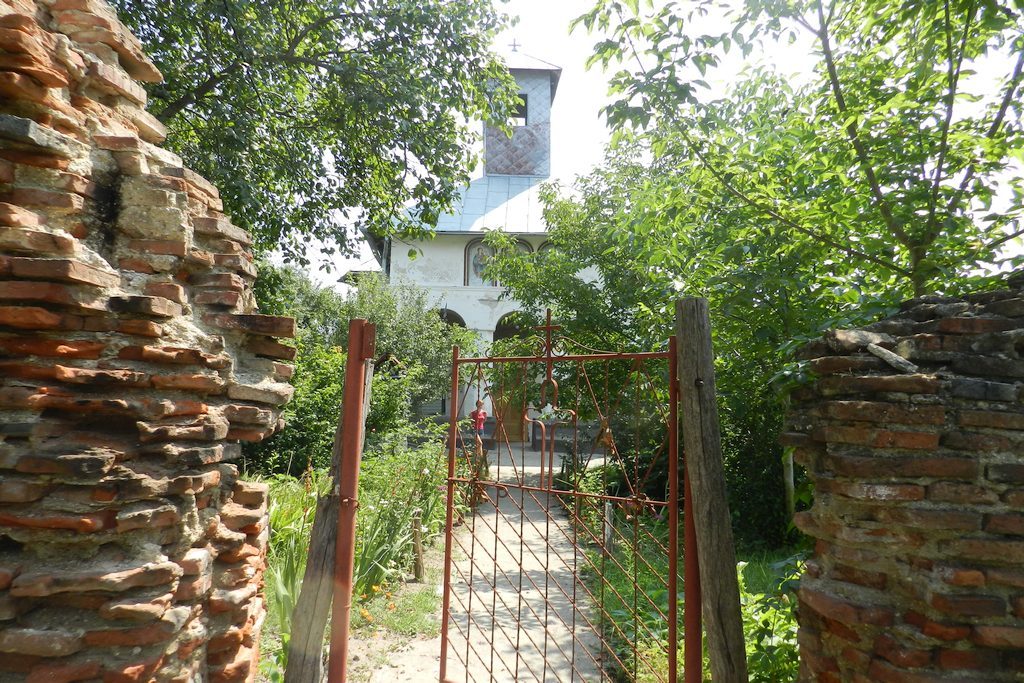

The church in Corcova dedicated to the Saint Voivodes was built by Constantin Strâmbeanu, high steward in 1752 on the grounds of an older church. It was repaired in 1889. The inscription from 1752 is at the Mogoșoaia Palace built by Constantin Brâncoveanu.
Corcova village, documented in the charter issued by Radu cel Frumos in 1472, is close to the Cosuștea de Motru river, on a roman road line. This settlement has had many leaders, among whom the descendants of king Constantin Brâncoveanu and Gheorghe Bibescu.
Vine culture had probably existed in this area in dacian times, being a residence area and not very far from the capital of Roman Dacia, Ulpia Traiana Sarmizegetusa.
In the 19th and 20th centuries: Corcova, as estate of the Bibescu family had its glory period at the end of the 19th and beginning of the 20th century. Prince Anton Bibescu owned over 2000 ha of land in the Cracova area, of vine, arable field and forrests. The prince hired young French agronomist Aristoteles Sauget to manage the Bibescu mansion in Corcova and the vignard. The young valedictorian graduate of the Agricultural Sciences from Nacy, Aristoteles Sauget is who reorganized the estate, planted noble vine species from France and created, after the vine making method from Bordeaux, the famous Corcovin and Corcovel, the later blendings having as bases Cabernet Sauvignon and they became very appreciated in France: the wine was loaded in oak tree wood barrels and transported with oxcarts to Strehaia. The the barrels were loaded into wagons and went to Paris.
As a sign of gratitude for his devotion, prince Anton Bibescu have the administrator 50 ha of land, on which he built an Alsatian style villa. The estate fell into decay with the fire in 1907 and later during the world war.
Corcova was the favorite vacation spot for Anton Bibescu and Martha Bibescu, as well as for some of their famous friends.
Prince Anton Bibescu was more than convinced that only in these places of the charming Motru valley could always find the saught after equilibrium of the body and soul, to engage again, with unimaginable ardor, with hightened energies, in the whirling waves of life, searching for the eternal mystery of man’ destiny on Earth. Here, in the Corcova mansion, he especially liked springs, letting the mesmirizing perfume of many flowers that he thought unique on this Earth take him over and which he tought he wouldn’t find anywhere else. The prince loved falls in Crocova just as much and he lived moments of rare hapiness when he saw the wide vignards overwhelmed with crops and when he touched, like a caress, the plump and greyish grapes. The frequent stops that the Bibescu family made in Corcova brought famous vists of Ion Minulescu, Ion Pillat and other personalities of Romanian culture and politicians of the time. At the prince’s advice, here in the Corcova mansion, Mihail Sebastian wrote the play „Steaua fără nume” (The star with no name) that he had initially named „Ursa Mare” (Ursa major) and whose action and characters were part of the reality of the settlements in the Motru meadow. The great playwright wrote in May 1943.
